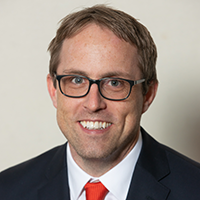
One Question Every Company Needs to Answer
One thing you learn when studying great banks is that the secrets to
their success often stem from softer, less-tangible qualities – leadership,
culture and other traits that are easy to talk about but hard to master.
There’s one quality in particular that comes up regularly in my conversations with bank CEOs: how they prioritize stakeholders.
Do they prioritize shareholder return? Is employee engagement more or
less important? And where do customers and the community fall on the hierarchy
of priorities?
This issue came up earlier this year, when the Business Roundtable, an
association of chief executive officers of major U.S. companies, updated its
“Principles of Corporate Governance.”
For more than 20 years, the document endorsed shareholder primacy – the
idea that corporations exist principally to serve shareholders. The updated
version abandons this approach, in favor of a broader one that emphasizes:
- delivering value to customers,
- investing in employees,
- supporting communities,
- dealing fairly and ethically with suppliers, and
- generating long-term value for shareholders, who provide the capital that allows companies to invest, grow and innovate.
I don’t know why the Business Roundtable updated its principles, or if
it will lead to changes at its members’ companies.
What I do know, however, is that great companies already think this way. They might say that they prioritize one group over another, but the reality is that it’s impossible to prioritize one without prioritizing all of them.
John Allison, the former chairman and CEO of BB&T Corp., wrote
about this at length in his 2014 book, “The Leadership Crisis and the Free
Market Cure.”
At BB&T we are not confused. In a free market our primary fiduciary obligation is to our shareholders. Our shareholders provide the capital that makes our business possible. We work for our shareholders. However, this objective is an end, not a means. This end is only accomplishable if we provide excellent service to our clients, because all of our revenues come from our clients.
He goes on:
Since ours is a people business, the only way to provide excellent service to our clients is to have outstanding employees. In order to have outstanding employees, we must create an environment where people want to work for BB&T – where they can learn, grow, and be fulfilled in their work. We do all this in the context of our communities, not from an altruistic perspective, but because if our communities do not grow and prosper, our business cannot grow and prosper.
Allison identifies shareholders as BB&T’s top stakeholders, but the
bank’s mission statement doesn’t talk about “maximizing” their return; it talks
instead about “optimizing” their return.
This is an important distinction. While economists and finance theorists talk about maximization in the long term, the reality is this tends to be a short-term concept, especially in banking.
Jamie Dimon, chairman and CEO of JPMorgan Chase & Co., alluded to
this in his 2006 shareholder letter: “It’s easy to grow short-term earnings:
just stop investing in your company’s future and compromise your standards on
accepting new clients and business.”
William Demchak, chairman and CEO of PNC Financial Services Group, has
talked about this, too: “Banking is probably the only industry in the
world where you can hide your cost of goods sold until there’s some sort of
downturn. . . . We can make loan growth be anything [analysts] want for a
period of time before it comes back to haunt us.”
Other businesses may be able to focus on short-term maximization. But banking requires balance. Between revenue and risk. Between cost of funds and earning assets. And between stakeholders.
“[Bankers] believe that a rising tide lifts all boats. They know that
when our communities succeed, we all succeed,” said the late Robert Wilmers,
former chairman and CEO of M&T Bank Corp., at the bank’s 2015 shareholder
meeting. “It’s why bankers actively work to make their communities better
places in which to live and work, and to ‘give back’ to the communities they
serve. While such support positions the banker as a leading corporate citizen,
he or she also acknowledges a certain ‘enlightened self-interest’ in giving,
knowing that the bank can only do well when the community does well.”
This, mind you, comes from the man who has created more value for
shareholders in recent decades than all but one other CEO in the banking
industry.
In short, there is no “right” answer to the
question of what stakeholder group deserves the highest priority. Different
organizations answer it differently. But all great organizations, as far as I
can tell, can answer it and are able
to explain the rationale behind their answer.



